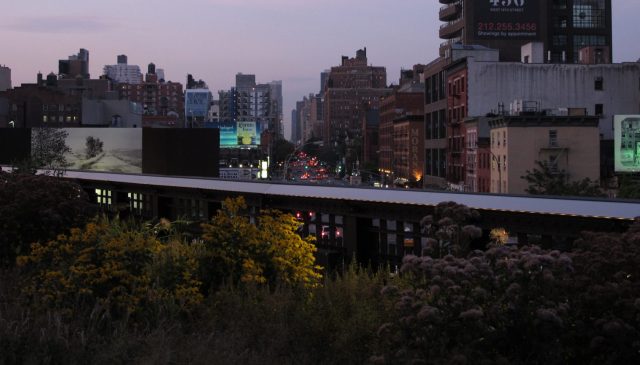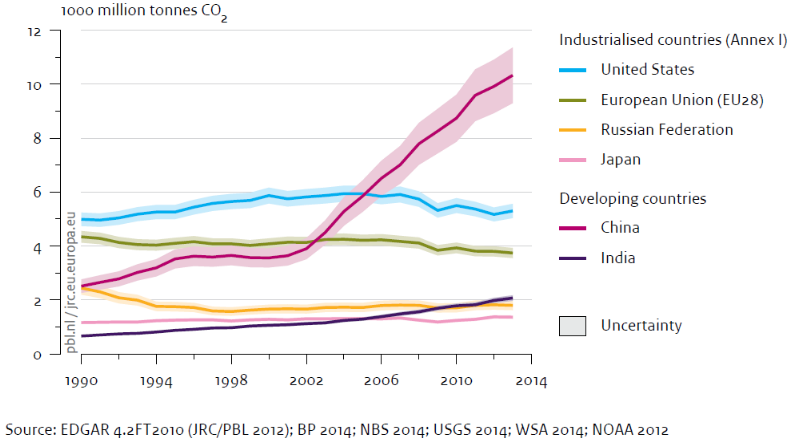Permaculture and degrowth are both movements whose foundational ideas were developed the 70’s, just as the evidence was amassing in the science world to be able to explain the consequences of unchecked growth and human-induced environmental degradation. As such, both movements are reactionary and propose a radical, ethics-based paradigm shift away from the globally dominant culture of over-consumption, towards a systems-based approach to sustainability and regeneration of both the social and ecological spheres. Though both movements were cultivated firstly within academic contexts, the body of knowledge around degrowth has generally prioritized the social sphere, including politics, economics, work-life balance and social structures, whereas permaculture has traditionally focused more on the ecological - specifically, on human habitats and food systems. In this article, I would like to propose some ways that an exchange of knowledge and knowledge-sharing strategies between permaculture and degrowth would be beneficial for both movements. This argument is based on the idea that the most interesting and diverse areas of any system are located at the edge, where one system, community, or way of thinking intersects with another. As someone who has been educated, both academically and experientially in permaculture and in degrowth, I have found that these two movements, founded on opposite corners of the planet but now diffused somewhat globally, are very much complementary. Overall, I feel that there are undeniable benefits to be had when these movements interact, share knowledge and resources. Below, I give a brief overview of the development of each movement in its respective context and then move on to discuss how degrowth can help permaculture and vice versa, finishing with a brief discussion on what such collaborations might look like. A Short Background on Both Movements Permaculture was synthesized in the 70’s by Australians Bill Mollison and his student David Holmgren. The term “permaculture” initially stood for a synthesis of the words “permanent” and “agriculture”, though it has more recently come to also signify “permanent” and “culture” as permaculture design is becoming more relevant for cultural and social applications. Permaculture was initially a response to the destruction of the environment and societies at the hands of the global capitalist socio-economic system, exemplified for Holmgren and Mollison in the agricultural practices that were taking place at the time on the island of Tasmania. Permaculture was an attempt to address the issue at the food and materials production level. It was also inspired in part by Masanobu Fukuoka’s text ‘One Straw Revolution’ which pioneered ecological approaches to farming. Permaculture is rooted in the ethics of Care of People, Care of the Earth and a third ethic which goes by several names including Fair Share, Return the Surplus, Careful Process and Parity, but which encapsulates the idea of not taking more than what is needed and designing for the equitable distribution of resources across time and space. The foundation of permaculture thinking is rooted in traditional and Indigenous ways of perceiving landscapes and peoples as interconnected, and interacting with the land in a manner that reflects a systemic understanding of nature. Permaculture also contributes modern innovations in the fields of natural building, education, personal and cultural systems design, and landscape applications for urban and suburban contexts. The beginnings of the degrowth movement, whose name was originally coined in French as “décroissance,” coincide to some extent with the publishing of the Club of Rome study, “Limits to Growth” in 1972 , lead by head author Donella Meadows. The study sparked discussions amongst intellectuals, including Nicholas Georgescu-Roegen, who is most noted for developing the foundational ideas of the movement, about how to respond as societies to a global system based on the idea of “growth at any cost”; an idea that is pushing Earth’s resources, ecosystems and societies to a breaking point. The degrowth movement was concretized in subsequent decades in France and has since spread significantly throughout Europe and the Americas, with several international conferences, research hubs, and demonstration projects popping up in the 2000’s. At the core of the degrowth ethic is the idea of social and economic solidarity with a conscious reduction in production and consumption in the Global North, and a focus on re-localization and conviviality in order to meet the needs of communities. Degrowth is also based on the understanding that the ecological and social cannot be thought of as separate, and by promoting the idea of a “good life for all” also focuses on preserving the ecosystems of which humans are an integral part. The Benefits of Permaculture for Degrowth Both permaculture and degrowth propose that the only way to design human habitats and their support systems is to employ systems-based thinking which does not separate the social and the ecological. That being said, permaculture literature and demonstration sites have pioneered in the field of ecological systems design. For instance, there are decades-old food forest projects located globally in both public and private settings; there are small, medium length and encyclopedic books on how to design landscapes that cycle and conserve energy while producing abundant and nutritious food, materials, water and habitat for both human and non human inhabitants. Permaculture focuses on the design process and proposes that the focus should be on the connections between the elements in a system rather than on the elements themselves. Therefore, permaculture designs need to be tailored specifically to each site in order to work with what is already there in a way that takes into account future generations (Sette, 2018). I believe that it would be very beneficial for degrowth literature and demonstration projects to intersect meaningfully with the ecological design wisdom embedded within permaculture, as this knowledge may offer valuable resources for project design. Secondly, it is my opinion that because much of the writing on degrowth is created within a very academic context and is written using complex academic language and jargon, it becomes inaccessible to a high volume of people. Though the ideas embedded within degrowth, such as downscaling economic production, conviviality, voluntary simplicity and others are understandable and common-sense, they are in a way “locked up” in their academic contexts and are therefore consumed chiefly by academics. This is unfortunate given that these ideas have such a grassroots approach to change. Permaculture, like the degrowth movement, had its beginning in the academic and intellectual sphere, however, perhaps because of its stronger focus on landscape design, most of the subsequent literature and coursework was crafted for lay people who may or may not frequent these spheres. This means that the language used in most permaculture texts published after “Permaculture: A Designer’s Manual” (Mollison 1988), is general more accessible for people who may find academic language to be a barrier. Though there is contention about affordability, especially in North America, permaculture courses are generally run for people of different ages, from different walks of life with a standardized 72-hour curriculum that offers an in-depth introduction to the permaculture lens. Because the of language accessibility and the standard course being widely available in both hands-on and online formats, it’s easier for people to start up their own permaculture meetup groups, associations and projects. This could be the reason that has allowed permaculture to diffuse to a higher extent than degrowth in both Europe and the Americas. If the degrowth movement were able to intersect with permaculture and create texts and programming that could be accessible and interesting to people outside of the academic realm, then the grassroots ideas of degrowth could be diffused much further and faster. The Benefits of Degrowth for Permaculture I believe that right now is a very opportune time for permaculture to gain inspiration from the degrowth movement. As mentioned previously, permaculture has taken huge strides in delineating approaches to ecological landscape design, however, the field of social permaculture is still relatively new and is currently being explored and fleshed out (e.g. Permaculture Women Magazine). In my experience, not enough of the social applications that are explored in many existing permaculture texts and courses go beyond a surface level understanding of the social issues they bring up and they often skirt around the issue that access to food and resources is inherently political. For instance, they do not explore in depth the complexities of things like global trade, privilege, discrimination, activism and resistance, and unequal access to resources, all of which are inherently built into the ways that we interact with landscapes. One advantage of degrowth is that it recognizes that access to resources is tied to power relations that must be acted upon actively in order to be changed. It therefore criticizes ideas like sustainable development (Kothari et. al 2014, Schneider et. al 2010), which push the belief that western-style development will make the world prosperous. It is here that an intersection with degrowth would be valuable to permaculture as it could deepen and round out the foundations of permaculture texts, proposals and demonstration projects. Because of the rapid diffusion of permaculture over the past decades, I would argue that it has come to have buzzword status. The buzzword “permaculture” sometimes gets overlaid on projects and ideas which seem flashy and attractive but which at their foundations do not adhere to permaculture ethics and principles. As someone who has been active in the permaculture movement over the past decade, I have seen first hand projects which discredit or trivialize Indigenous practices, apply oversimplified reductionist thinking to solving global crises, ignore activists who are working towards similar goals as those of permaculture, and perpetuate discrimination based on gender, race and social class. I do not believe that these outcomes are in any way intentional, but rather that there is a lack of depth in the understanding of the social complexities that intersect with permaculture applications. Degrowth texts contain fleshed out ideas about economics, wealth distribution, infrastructure, equity, conviviality, solidarity with environmental justice movements, and democratic practices (Martinez-Allier 2012, Schneider et. al. 2010, Schneider 2010, Perkins 2010). In short, if made accessible, degrowth can offer research, depth and vocabulary to the permaculture movement’s explorations of social contexts. Discussion and Conclusion If these two movements can offer so much to one another, then what might an intersection of degrowth and permaculture look like? Firstly, members of both movements would need to enter into meaningful dialogue, perhaps by means of a joint conference or summit where ideas and projects could be shared and viewed through the lens of both movements. Collaborations and knowledge exchanges would then likely happen organically in the form of open space or world cafe forums, workshops, and discussions. There are many ways that a collaboration between permaculture and degrowth could look like; for example:

Auf den stillgelegten Hafenanlagen entlang des Ufers des East River in New York entsteht der Brooklyn Bridge Park. Über 2 Kilometer erstreckt sich die Grünanlage mit Sport- und Freizeitangeboten und bester Aussicht auf die Skyline von Manhattan. Etwas weiter südlich im Herzen Brooklyns liegt der Prospect Park, ein beliebtes Ausflugsziel für Familien. Auch hier hat sich in den letzten dreißig Ja...
By Kanchi Kohli and Manju Menon Is the world going through an environmental crisis? If yes, who has caused it and where does the onus to remedy it lie? If one is to go by the policy debates and outcomes worldwide, the existence of a crisis seems established, the attribution contested, and the road map for remedies under perpetual review. Each year several international conventions revisit thei...

... und was die Sommerschule "Degrowth konkret: Klimagerechtigkeit" dazu beiträgt Von Elena Hofferberth Der UN-Klimaprozess findet mit der 21. Conference of Parties in Paris in diesem Jahr einen weiteren Höhepunkt. Ziel ist die Verabschiedung eines verbindlichen, alle Staaten umfassenden Klimaabkommens, welches die Erwärmung der Atmosphäre auf maximal 2 Grad begrenzen soll. Ob es dazu kommt i...